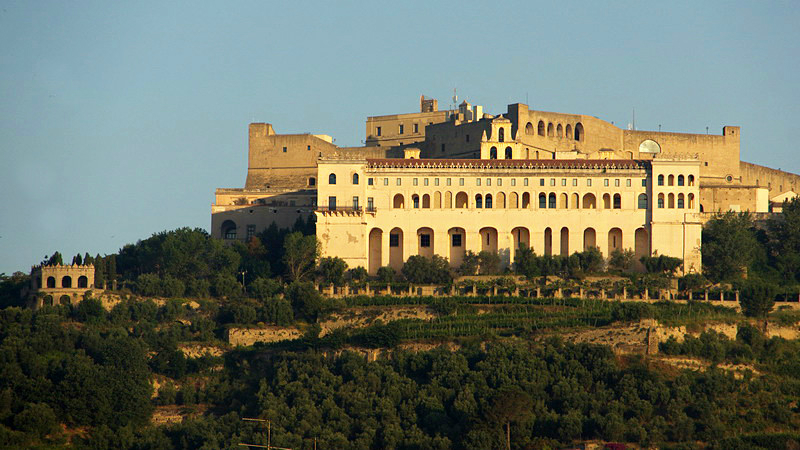archaeological museum of paestum
4A地址: 暂无
开放时间: 暂无

景点印象
we contemplated not doing the museum but were glad we did. It's quite big but we chose an audio guide which is for the ruins also and this was great.There is a variety of stuff on display with something to suit everyone.
I saved this museum for the afternoon when I knew it would be raining. The fascist architectural building was designed in 1938 but built in 1954. I personally loved all the slabs or frescos that portrayed ancient life in Paestum. I also appreciated the English descriptions throughout. The fresco "Tomb of the Diver" is the museums's treasure dating from 480 B.C. - don't miss it. Another highlight is the WW II 10-min. continuous film footage showing allied soldiers first glimpse of the ruins of Paestum and their camps surrounding them.
Great collection of every day life objects from the Hellenic period. It's not a big museum, but there's a lot to see in a well organized space.
The museum offers everything that was ever found in the archaeological site of Paestum. The finds range from the stone-age to the Roman period. The ticket for the museum is not expensive. Especially if you consider what is there to see. Some artifacts are beautiful; especially jugs, other kitchenware etc. You should really take your time and explore the museum!
This museum contains a comprehensive collection of finds from the Paestum area. It really captures the essence of the place and it should not be missed.The collection is divided into 3 parts. The Neolithic and Iron Age which has very interesting finds with excellent English explanations as well as interesting videos showing the life and crafts of these era. This small gallery is very well laid and informative compared to other museums with similar collections.The second part related to the Greek heritage of the city is the most extensive and unique. The tomb paintings are rare and extremely beautiful especially the enigmatic tomb of the diver. There are also many video screens showing aspects of life and art in ancient Paestum.The third part is related to the colony under Roman rule, a bit hard to find as it is on the second floor and the staircase is just near the main entrance. This gallery has some interesting statues and funerary objects from the roman period.The Audio guide for the museum is quite interesting and is recommended. It also covers the archaeological area although not as thorough as the museum.
Excellent addition to the site nearby, provides an insight to the people and the lives they led. Well laid and presented. Attendents answered questions well.
You have go here to purchase your ticket to get into the Paestum. It is across the street (there are signs from the archeological site directing you to it). You can decide if you want to go into the site or the museum first. It was only 10 euros for the museum and the site. It is worth checking out the museum, even if it is only to see “The Diver”. This fresco is huge, much larger than I ever imagined it being. I enjoyed checking out other items in the museum also but this was my favorite. I can’t imagine coming all this way just to go to the museum. While it is good, the best part of this is the archeological site itself.There are restrooms here. Not sure if there is a café here, I don’t recall. There are several cafes around the museum / across the street from the archeological site along with places to purchase tourist goods.
The museum is dedicated to Paestum and its locality but has finds of international importance in its collection. Its small but presents itself really well with English translations for most items. The really special items were the painted tombs in such amazing condition, but the neolithic grave goods were also fascinating and some of them were discovered during the second world war, when the allies invaded Italy, and were excavated by the British Army's archaeological unit - a very unusual war story to learn about...
Amazing to see so many artifacts that are ancient.It would have been better if more descriptions had been available.The museum is very convenient as it is cross the street from the ruins.
Firstly, this museum is not in Greece. It is in southern Italy, by the archaeological ruins of Paestum. The metopes from the Temple of Hera are well exhibited, without being overly restored. There are many of the lovely treasures unearthed at Paestum, but by far the most interesting are the frescoes from the tombs, "The Diver" being the most famous. Explanations in Engish are there, but be prepared to just enjoy what you see without reading through everything.
We really enjoyed this museum , it tells the story from Pre Neolithic times through all the different phases. The finds are well presented and the descriptions comprehensive and in English. It is well worth taking your time browsing all the exhibits. Once you are on the site it all clicks into place.
Museum well kept and full of history. Interesting story of the discovery of the Tomb of the Diver.We recommend that you enter with a guide.
You must go and see Paestum.We took the train from Salerno (2.80 euro/pers/go) and in 30 min we were there. From the train station you have just 10-15min maximum to walk to Paestum (10 euro the ticket/ pers -> museum + archaeological site). The museum is very important to be seen, but after the site.I must say that I liked Paestum more than Pompey.
after walking around the ruins we went to the museum. My only complaint was not knowing what I was looking at! Some descriptions were in English but not many. But still unbelievable that they were able to find these objects from so long ago!
The museum has far more to it than it might seem to from the outside. It very easily takes you from pre-history through to its Graeco-Romano period, and a little of its story during WWII, but there is a lot of it, and if you are especially interested, will likely take you far longer than you expect. It took us over 3 hours. This is important as there is no cafe inside the museum so make sure you get something to eat and drink beforehand.Unless you are Italian, or have some knowledge of Italian, Latin, and/or Graeco-Romano history and mythology, take a guided tour or a very good Italian phrasebook, as at the time of writing, the majority of displays and artefacts are labelled only in Italian.

